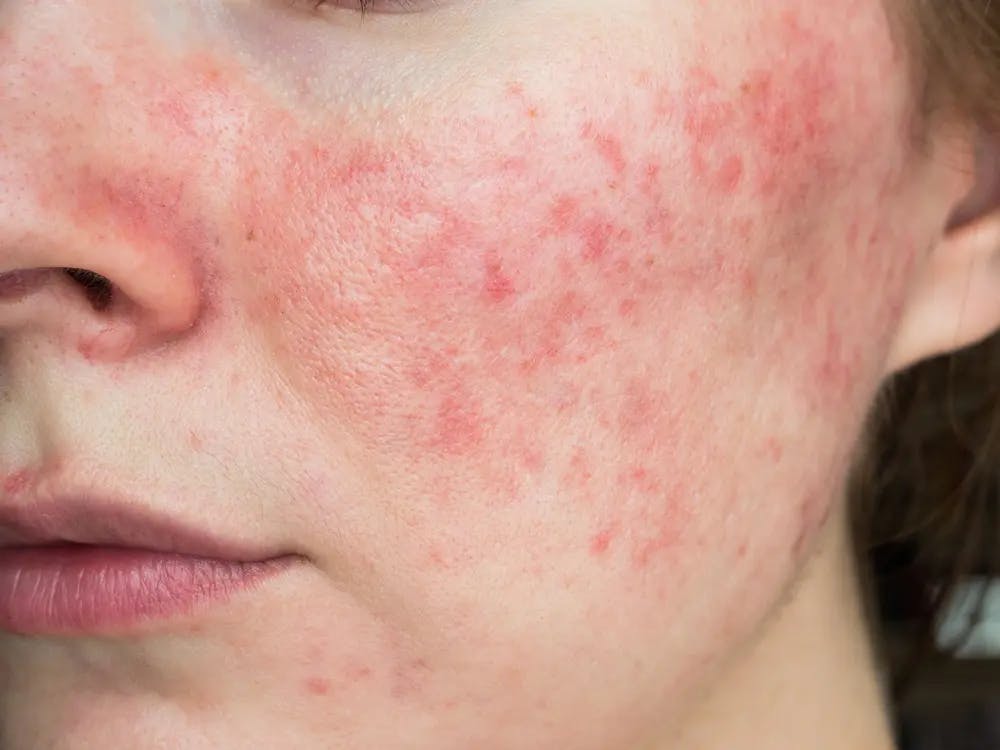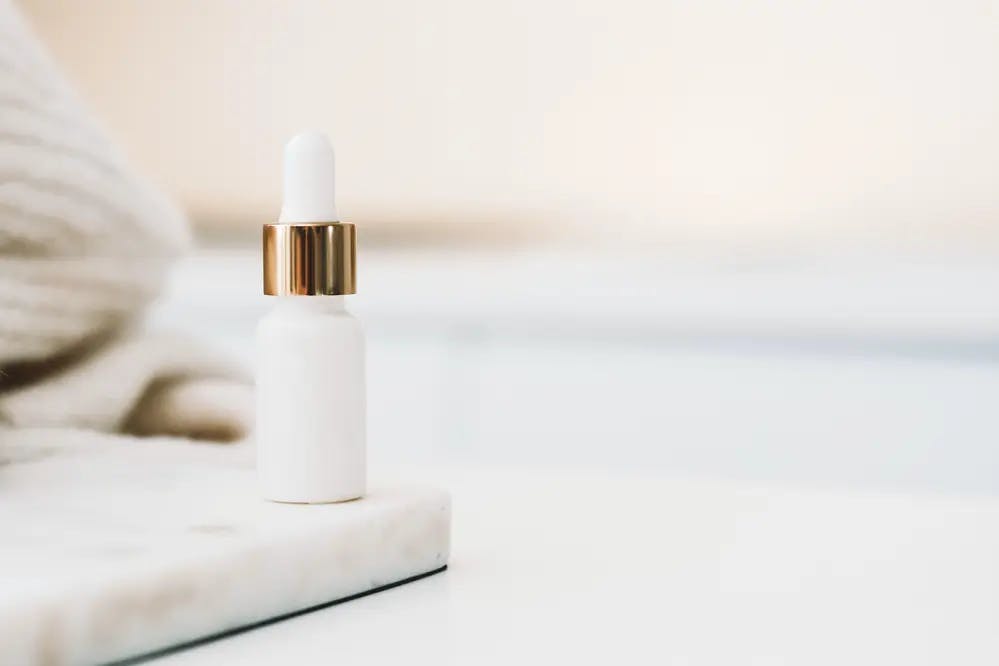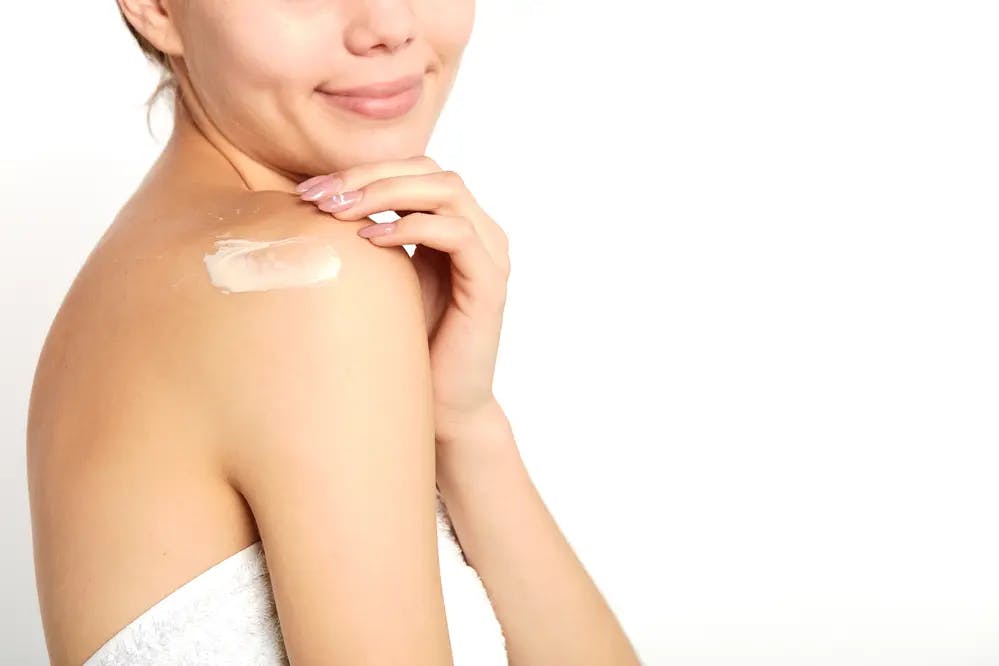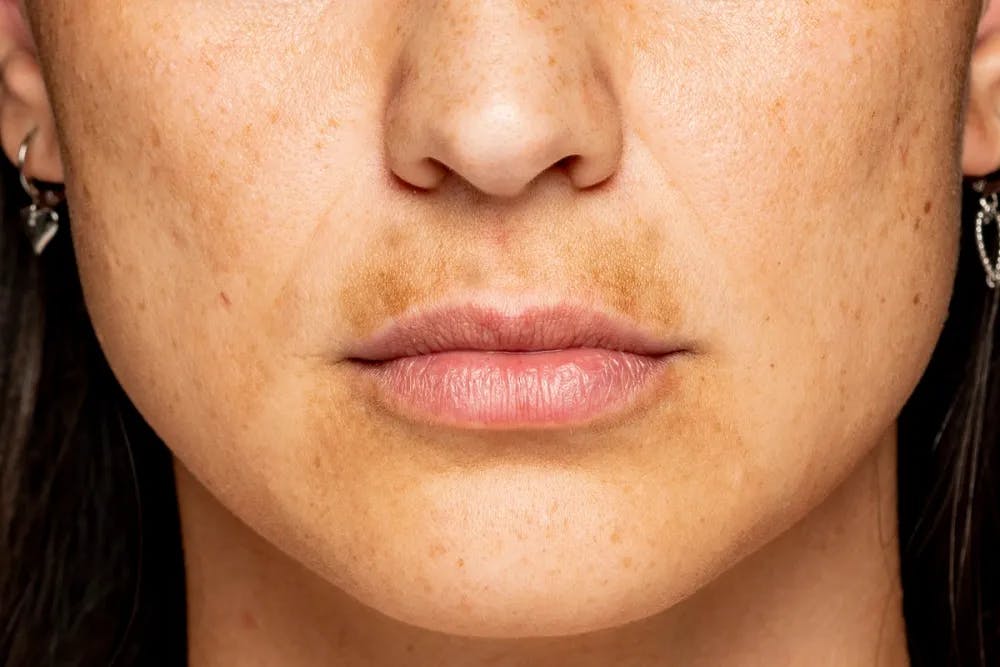The Secret Weapon for Getting Rid of Acne: Azelaic Acid
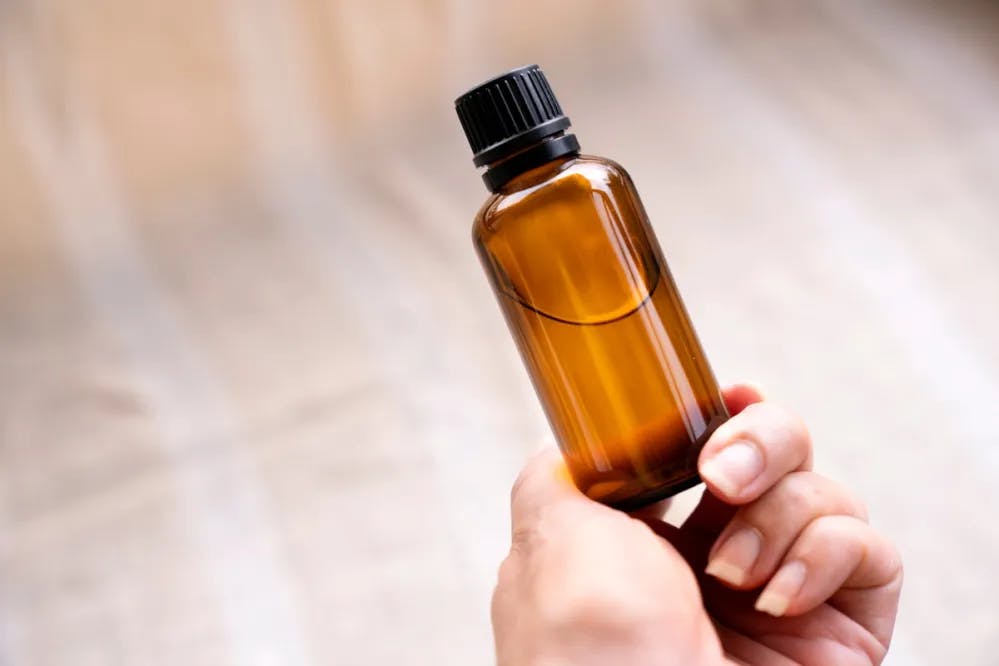
Table of Contents:
- What is Azelaic Acid?
- What is Azelaic Acid Used For?
- What are the Benefits of Azelaic Acid for Different Skin Types?
- Are There Any Risks and Side Effects To Using Azelaic Acid?
- How to Use Azelaic Acid - Step-by-Step Guide
- Step 1: Cleanse Your Skin
- Step 2: Apply Azelaic Acid
- Step 3: Repeat at Night
- Mix and Match: Combining Azelaic Acid and Other Skincare Ingredients
- The best Azelaic Acid Products for Calmer, Brighter Skin
- The Ordinary’s Azelaic Acid Suspension 10%
- Paula’s Choice 10% Azelaic Acid Booster
- Peach Slices’ Redness Relief Azelaic Acid Serum
If you have mild to moderate acne, you might have heard of azelaic acid as a possible treatment for removing blockages. This chemical exfoliator can, indeed, break down trapped skin cells, oil, and substances and improve the way your skin looks and feels - the reason why this ingredient has become a popular choice for people dealing with skin concerns such as rosacea, perioral dermatitis, and acne.
In this article, we will explain everything you need to know about azelaic acid - including its benefits, who it’s recommended for, and how you can combine it with other skincare products to achieve the best results. Lastly, we’ll include some over-the-counter products you can safely add to your skincare routine to obtain long-lasting effects.
What is Azelaic Acid?
Azelaic acid is a dicarboxylic acid that occurs naturally. It can typically be found in grains like rye, wheat, and barley, but it’s been lab-engineered to be stable enough to be used in skincare products. Most prescription ones use a concentration between 15% and 20%, but there are many over-the-counter options that are equally effective at 10%.1,2
This multifunctional ingredient offers several benefits to your skin. For one, it’s a mild leave-on exfoliant that can unclog pores and works well against inflammatory and non-inflammatory acne lesions. But there’s more. Azelaic acid also has strong anti-bacterial properties that inhibit the growth of microorganisms controlling the formation of acne.
What is Azelaic Acid Used For?
Using azelaic acid can make your skin visibly healthier regardless of your age or skin type.3,4 There are many uses for azelaic acid, including but not restricted to:
- Rosacea and redness: Azelaic acid is very effective in addressing rosacea because it can clear bumps, minimize facial redness, and control swelling (this is done by inhibiting the enzymatic activity of protease in promoting microbial growth).
- Hyperpigmentation, melasma, and brightening: The acid lightens the skin tone by inhibiting the tyrosinase activity in producing melanin, so it can address hyperpigmentation, especially among darker skin consumers. Azelaic acid also has a positive impact on melasma (mechanistically, it is believed that it disturbs the DNA activity within the cells and mitochondria within the melanocyte cells, slowing down the process of melanin formation and leading to lower production of coloring pigment - which in turn translates into fair and even color tone with lighter complexion).
- Acne and clogged pores: Azelaic acid can kill the bacteria that cause acne, regulating the cellular turnover within the follicles and minimizing the extent of follicle blockage and the formation of comedones. This helps deal with blackheads on your face’s skin. This substance also normalizes keratinization, helping keep your pores clear.
- Inflammation: Azelaic acid has anti-inflammatory properties and can soothe irritation, improving the appearance of visible blood vessels and swelling.
What are the Benefits of Azelaic Acid for Different Skin Types?
Azelaic acid is suitable for all skin types and safe for dry or sensitive skin. Being a mild exfoliant, azelaic acid also has antibacterial and anti-inflammatory properties that make it an excellent choice for those dealing with rosacea, acne, hyperpigmentation, and other skin concerns.5
Although you can use azelaic acid alongside other powerhouse ingredients, if your skin is very sensitive, you can layer it over some moisturizer (instead of simply applying it on cleansed skin) to increase tolerability during the first days of treatment.
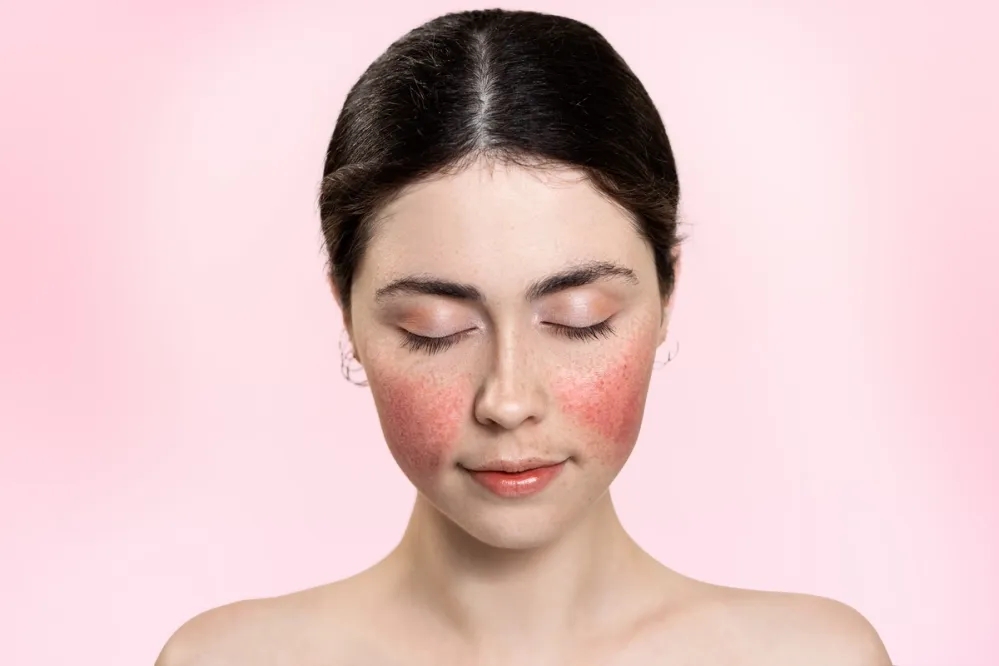
Are There Any Risks and Side Effects To Using Azelaic Acid?
One key aspect of azelaic acid is its safety and low toxicity for topical applications for humans - even in high-concentration dosage.6-7 For the most part, products containing this acid are also considered safe to use during pregnancy and breastfeeding, although there haven’t been enough trials to be 100% certain.
There’s just one thing to keep in mind: You might notice some irritation, redness, and mild burning when you first use the products. These tend to disappear quickly, but it’s best to apply azelaic acid a few days a week to start with, and then build up to daily use gradually to avoid adverse effects. Make sure you read the product description’s warnings and instructions for more details.
How to Use Azelaic Acid - Step-by-Step Guide
Because azelaic acid can produce some redness and irritation when you start using it, it’s always best to acclimate your skin by ramping up use over time. More product doesn’t mean quicker results, so you can start slowly!
Step 1: Cleanse Your Skin
Start your skincare routine with a gentle cleanser. Even though azelaic acid is very mild, you can still get some irritation as you begin using it. It’s best to start with some water and mild soap or cleansing lotion. Rinse well and pat dry.
Step 2: Apply Azelaic Acid
Once you’ve washed your face, you can then apply the topical azelaic acid product. Start with a pea-sized amount on your skin. If you’re also using another substance simultaneously (for example, to treat rosacea), you can use it afterward - ideally separating the application of the two by a few hours.
Step 3: Repeat at Night
You can apply azelaic acid in the morning and again at night. In fact, prescription azelaic acid is designed to be used twice a day. How often you do it depends on your skin condition. For example, if you’re also using a retinoid for acne, you might find the combination of the two products too irritating, so you could do one day each or only use azelaic acid in the morning and retinoids at night.
Mix and Match: Combining Azelaic Acid and Other Skincare Ingredients
Although azelaic acid can be used alone topically, it is also commonly blended with other active ingredients. For example, mixing azelaic acid with tretinoin can offer superior results for skin whitening and tone fairness. Likewise, when blended with glycolic acid, you can get higher efficacy against hyperpigmentation. You can also safely combine the acid with other brightening and soothing ingredients like niacinamide.
Remember that azelaic acid is an exfoliator. Although azelaic acid has similarities with alpha-hydroxy acids (AHAs) and beta-hydroxy acids (BHAs), they do not work in the same way. On the one hand, azelaic acid is not as effective as AHAs and BHAs, but it can improve uneven skin tones better. So, in short: There's no reason not to use them all - provided you avoid over-exfoliating your skin by applying too much of them simultaneously.
If you’re using other products to treat rosacea, such as vitamin C serum, consider using these on alternative routines or days - especially if you notice irritation or redness.
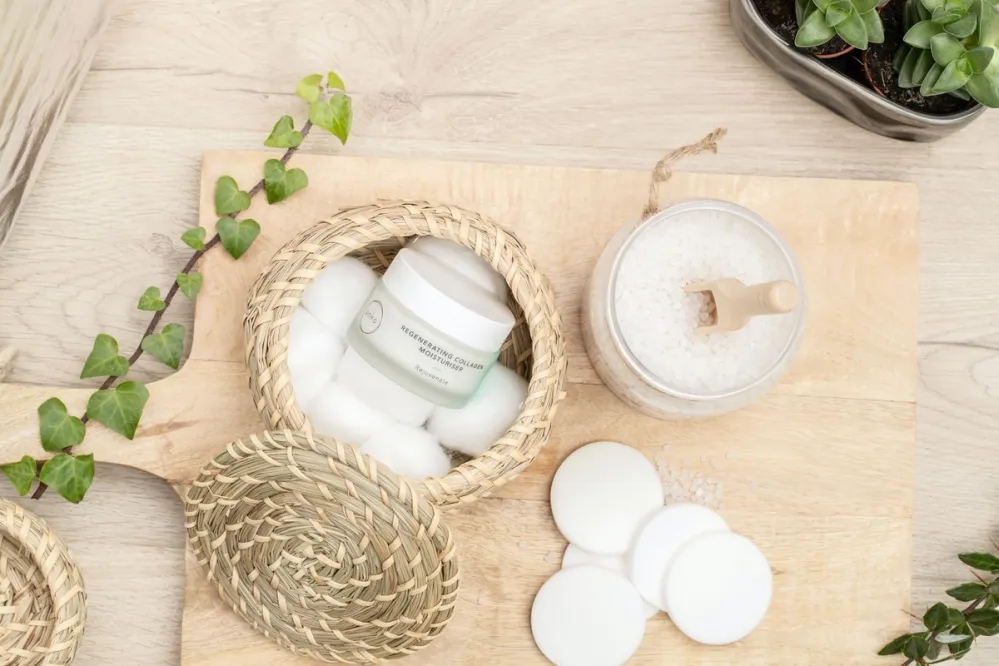
The best Azelaic Acid Products for Calmer, Brighter Skin
Azelaic acid can be prescribed in two different concentrations: 15% or 20%. Over-the-counter products, on the other hand, tend to be 10%. Luckily, azelaic acid is an easy-to-access ingredient. So, let’s go through some recommendations for specific products you can try to tackle sensitive skin concerns.
The Ordinary’s Azelaic Acid Suspension 10%
The most affordable out of the bunch, this product is simple with no other actives other than Azelaic Acid. With a cream formula, you can rub it into your skin quite easily both morning and night. Be sure to give this a try if it’s your first time using Azelaic Acid.
Paula’s Choice 10% Azelaic Acid Booster
A tried and true product in the skincare community, this is a classic go-to. Formulated with additional, supporting ingredients such as .5% Salicylic Acid to help with exfoliation and both Licorice Root Extract and Allantoin for their calming effects on the skin.
Peach Slices’ Redness Relief Azelaic Acid Serum
This has been a more recent addition to the Azelaic Acid camp. It is jammed packed with calming and soothing ingredients such as Panthenol, Green Algae, Allantoin, Centella Asiatica Extract, and a few vegetable extracts. This would be a great choice for those suffering from rosacea and redness!
If you’d like to check out more products featuring Azelaic Acid, join us at Breakout!
References:
- Nazzaro-Porro, M. (1987). Azelaic acid. Journal of the American Academy of Dermatology, 17(6), 1033-1041.
- Katsambas, A., Graupe, K., & Stratigos, J. (1989). Clinical studies of 20% azelaic acid cream in the treatment of acne vulgaris. Comparison with vehicle and topical tretinoin. Acta Dermato-Venereologica, 69, 35-39.
- Sieber, M. A., & Hegel, J. K. E. (2014). Azelaic acid: properties and mode of action. Skin pharmacology and physiology, 27(Suppl. 1), 9-17.
- Cavicchini, S., & Caputo, R. (1989). Long-term treatment of acne with 20% azelaic acid cream. Acta dermato-venereologica. Supplementum, 143, 40-44.
- Nazzaro‐Porro, M., Passi, S., Picardo, M., Breathnach, A., Clayton, R., & Zina, G. (1983). Beneficial effect of 15% azelaic acid cream on acne vulgaris. British Journal of Dermatology, 109(1), 45-48.
- Searle, T., Ali, F. R., & Al-Niaimi, F. (2022). The versatility of azelaic acid in dermatology. Journal of Dermatological Treatment, 33(2), 722-732.
- Thiboutot, D., Thieroff-Ekerdt, R., & Graupe, K. (2003). Efficacy and safety of azelaic acid (15%) gel as a new treatment for papulopustular rosacea: results from two vehicle-controlled, randomized phase III studies. Journal of the American Academy of Dermatology, 48(6), 836-845.
